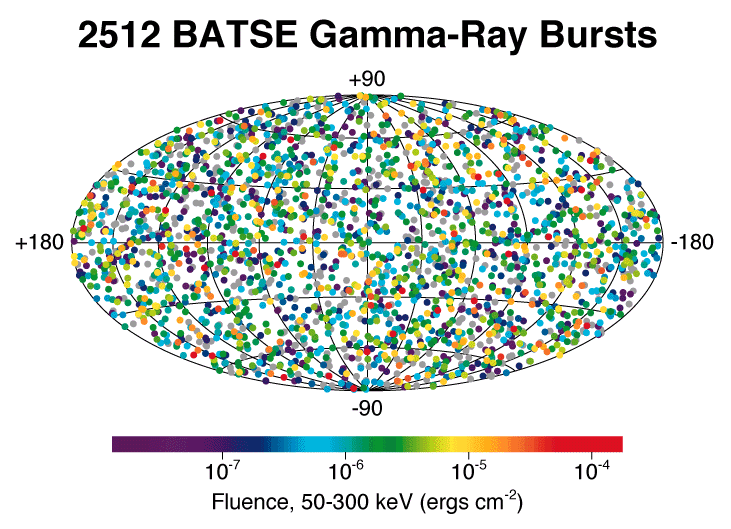2512 Gamma-Ray Bursts Including Fluence (Credit: CGRO BATSE Team) If GRBs were from our Galaxy, then the most distant (hence faintest) ones would be have the greatest tendency to be seen towards the Galactic plane and center, just as bright stars are all around us but the Milky Way is made of distance-dimmed stars. BATSE found that every category of GRB, whether chosen by flux, fluence, hardness, duration, or any other parameter, is distributed isotropically.
IMAGES |
By Mission |
Stars |
HEASARC Home | Observatories | Archive | Calibration | Software | Tools | Students/Teachers/Public Last modified: Thursday, 26-Jun-2003 13:48:47 EDT |

